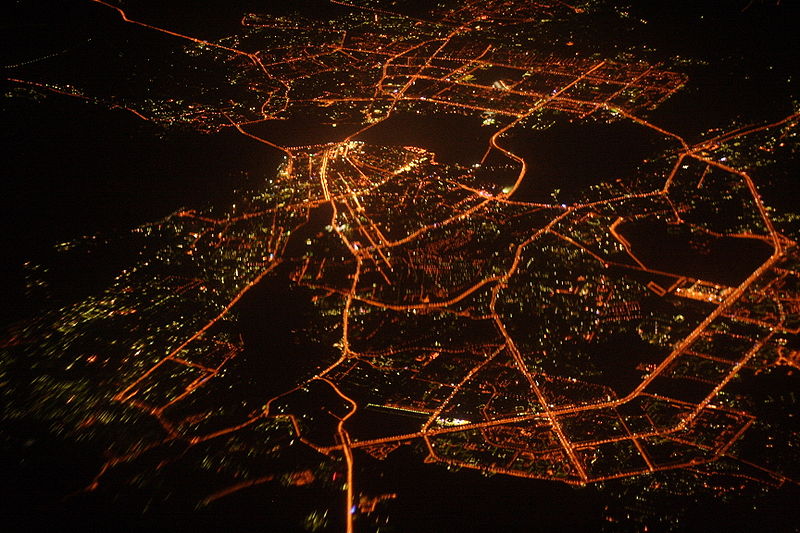A new study conducted at the University of Haifa found that one "blow" of artificial light at night disrupts the cell's division mechanism, which is one of the mechanisms that are damaged during cancer

One "blow" of artificial light at night disrupts the cell's division mechanism, according to a new study conducted by Dr. Rachel Ben-Sholoma of the Department of Evolutionary and Environmental Biology of the University of Haifa in Oranim. "Impairment of the cell division mechanism is one of the characteristics of cancer, so it is important to understand the reasons that cause damage to this mechanism," Dr. Ben-Shloma pointed out. The study was published in the journal Cancer Genetics and Cytogenetic.
In the current study, laboratory mice were placed in an environment where they were exposed for 12 hours of light and 12 hours of darkness. During the hours of darkness, the mice were illuminated with artificial light for one hour. After that, gene expression was tested in the cells in the brains of the mice that were exposed to the "blow" of light compared to mice that were not exposed to the artificial light.
Previous findings in a similar study by Dr. Ben-Sholoma suggested that the cell's biological clock was damaged. In the current study, it became clear that the cell division mechanism was also damaged and that a large number of genes were abnormally expressed in the brains of the mice that were exposed to light. According to the researcher, it is important to note that among the genes that were expressed abnormally there were also genes related to the formation of cancerous tumors, but also genes that help in the fight against cancerous genes. "What is certain is that the natural division has been damaged," she noted.
She further added that in the current study it became clear that one instance of light has an intracellular effect and now the effect of many instances of light must be tested, as happens in the daily life of almost every one of us. "There is no doubt that light during the night signals something to the body and therefore it starts acting in response. Due to the importance of the phenomenon, we must continue to investigate the issue", concluded Dr. Ben-Shloma.

8 תגובות
L-L: Without a doubt you are sick. Sick with cancer. We all get cancer all the time. What changes is its size, at what rate it reproduces and how the body is able to fight it. Only when the body fails to fight it and the pace is relatively fast does the cancer become dangerous. That is, you are exposed to light that can cause cancer - okay, you also probably live in the center of the country and breathe in particles that are emitted from cars, which are also not exactly the breakfast of champions.
Lalotem - a small fire eventually produces light that is equivalent to a 100 watt incandescent lamp. Does this make it unnatural?
The truth is that I encountered similar things. The question is, does the body have a problem receiving light at "unnatural" hours of the day or is it about the type of light? That is, a person who is in a completely isolated room and receives 12 hours a day of light at a wavelength of the sun's length, did he come out healthy? If we were in a solar system identical to our own solar system in every respect except that it had two suns and a day of never ending sun - would this still be the effect. It sounds like they still haven't been able to separate whether what makes a difference is the type of light/the amount of exposure/ and multiple phases can cause a problem?
What about yellow light? I worked in a place that had yellow light because it was necessary to filter the ultraviolet coming from the white light in that place
If I was exposed to yellow light is it also dangerous?
Eran - only the sun is non-artificial light. By the way, red light is not perceived by our body as the light that determines the hours of the day, only the rest of the visible spectrum. So in fact a red night lamp is like darkness and similarly a small fire.
To the guide of the universe -
There is already a respectable amount of research that shows a connection between artificial lighting during the hours when we are supposed to sleep and an increase in cancer cases.
The research was done, for example, on nurses who work for many years in shifts, then they are awake and exposed to light late at night when their body expects to sleep. Recently there was a precedent case in which a case of breast cancer in a nurse was recognized as a work accident.
Dr. Ben Shlomo's research tries to find out the intracellular mechanisms of a known and studied phenomenon.
For more information in this area you can search about biological clocks and melatonin.
The increase in the number of cancer cases is due to the fact that we turn on electricity in the living room ????
A little puzzling.
In order to check this to the end, you need to find and compare forest dwellers who do not use electricity, nor do they light fires at night. But between us, it doesn't seem to me that they reach the extreme age at which cancer appears in members of the electrical culture.
Yala returned to the caves
What is non-artificial lighting? Other than sun? Isn't a bonfire artificial lighting?